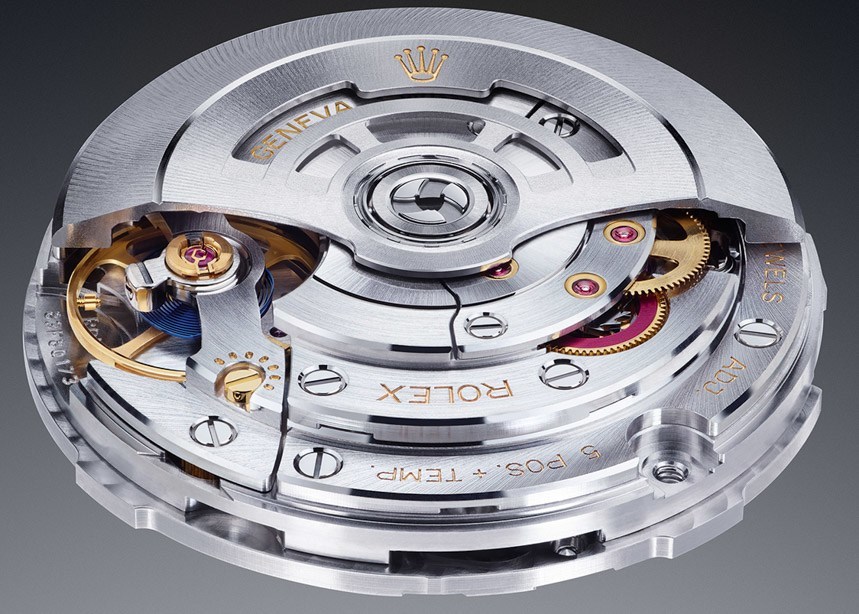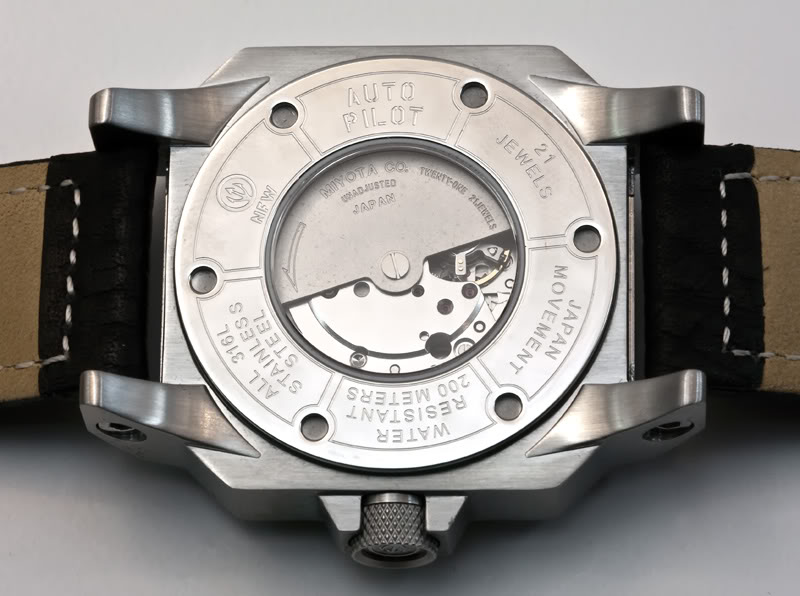As the heart and brains of our time keeping devices, watch movements are undoubtedly the most important parts of our watches. The watch simply can’t work without it. They may be mechanical, or through a combination of mechanical and electronic parts. Back in the day, many movements were mechanical and were quickly repaired by watchmakers with spare parts easily available. However, automatic watches with electronic movements quickly gained market. Watch movements are usually incredibly small, can fit in any watch and are often delicate. There are standard watch movements that have been manufactured by specialized companies. Most watch makers use these standardized movements and do not make their own. Swiss and Japanese movements are undoubtedly the top standardized models available. When you open any watch and take a keen look, you will discover either a Japanese or Swiss watch movement. It could be hard to tell them apart especially in the extreme ends; low-grade and high end.
Swiss Movements

ETA is the largest Swiss company among others i.e. Rotunda, FE ISA. For all of them, identification is by markings at the back of the watch or by watch Movement Company. If this is not possible, there is an alternative that involves the bridge. It is unique to every watch just like fingerprints to each human being. This `bridge’ is found on the dial.
In general, a Swiss movement consists of 3 letters C.T.A. this is usually followed by a number combination, which is the reference number. There is often a glassy red dot at the point the pivot of the wheel goes through called the level. The watch movement may vary depending on if the watch has a seconds hand or calendar window, or how thick the dial is. A watch with a calendar window is often located a 3 o’clock, 4 o’clock, and 6’oclock. This movement can be used to determine the workability of the calendar wheel, coil, circuit or both during repair.
Japanese Movements

Seiko and Citizen are very large watch companies. They are also the best examples of companies using Japanese movements. These movements were originally invented and created by Japanese companies and are further classified to Hattori and Miyota movements. Hattori movements are often interchangeable and are used by Seiko. Citizen, on the other hand, uses Miyota 8215 movements. This consists of a jewel three hand with date movement, unidirectional winding system, an accuracy of -20 to +40 seconds a day and a minimum power reserve of 40 hours. Its diameter is 25mm with 5.67mm thickness, and sects* at six-half cycles per second.
Apart from Seiko and Citizen, most Asian watches are said to use this movement, combining them both.
Identification in Japanese movements is often on the back of the watch or even in the bottom of the dial. They can also be identified in the movement, for example, VX42, V810, etc. and SR12, 6L12* for citizen.
Similarities
- Both watches are above average since traditional ones were always 2.5 HZ (18000BPH).
- Both Japanese and Swiss use synthetic rubies in their movements. They both have the jewels used to reduce wear and tear on moving parts.
- The Swiss and Japanese movements are above average regarding the jewel number, with both well above 17.
- The movements are all automatic. They utilize a winding rotor so that the main spring can be powered.
- Both are well equipped with innovative and powerful features.
- The movements offer incredible shock resistance.
Differences
- Swiss movements are significantly more expensive than Japanese ones. Basic Swiss ones could range up to $200 per movement while the Japanese movements can be purchased for under 100 dollars.
- The Miyota (Japanese) is available with 21 jewels and beats at 21600 BPH, six beats per second while the ETA (Swiss) with a 25 jewel movement has 28800 beats per hour or 8 per second.
- In case you inspect the movements or buy an open heart watch, you will notice the ETA (Swiss) are usually more “decorated” with high polished mechanics and gold plating, which most Japanese movements do not have.
- The ETA (Swiss) movements have 25 jewels while Miyota (Japanese) have 21 jewels.
- Automatic movements usually have a power reserve built in. The Swiss ETA comes with 40 hours reserve while their Japanese counterparts have 45 hours. In addition, the Swiss movements require less wrist time per day to keep going. This is because their rotor does not use ball bearings, hence more efficient winding of the watch.
- When it comes to shock resistance, Swiss movements use Incabloc. This works by allowing jewels to float when bumping occurs. In Japanese, it’s called the Parashock.
- The Swiss movements do not stop for moments at a time because of wrist movements unlike the drive in Japanese movements i.e. Miyota in the 8215.


400 hours reserve for ETA movements is simply not true. Around 40 hours for an average swiss automatic watch.
Thanks for pointing that out. It was a typo and has been fixed and updated!
can you please give me your thinking on the alpha submariner using the miyota 8215 movement, it seems cheap does this mean the quality is suspect or just a good buy ? how long can i reasonably expect the watch to last ? thankyou
I am looking quartz movement that has the coil crystal and battery does the japanesse 3382G support it. or do I need to get swiss mov
Hello
What is the torque difference between a Swiss and a Japanese’s watch movement?
Not a bad general view, but there are some glaring issues. We cannot say “any watch” we open will have either Swiss or Japanese movements. There are millions that have Chinese movements that are very well made and many are copies or adaptations of either Swiss or Japanese movements.
Even so, some Swiss movements are in fact Japanese movements made under licence, such as the TagHeuer Carrera models.
My view is that most Swiss movements are unnecesarily expensive, and that Japanese movements such as Seiko spring drives are hugely advanced.
Some writers even point out that many Swiss watches even contain imported Chinese movements with a few Swiss parts added so that they may be called “Swiss”…
This is not to say that the Swiss do not have innovative and special movements…Swatch Sistem 51 is a mind-blowingly different automatic. Zenith uses Silicon springs to power some high end watches. Rolex movements seem to be bulletproof.
The world of watches is truly fascinating…
I agree. Many Asian / Chinese movements are very close copies of high grade Swiss movements, such as earlier Rolex mechanisms. Nowadays, Rolex moved on to even more precise manufacturing such as UV-Lithography, the technology used to manufacture electronics chips with feature sizes of just nanometers, rather than traditional machining. This can’t be economically copied. They also use magnetic hairspring and boasts of +-2sec/day precision.
Swatch’s Sistem 51 uses 51 components, completely machine/robot manufactured. There is only 1 screw, all other components are riveted, hence not serviceable. The engine is also laser welded inside a plastic body, so removing the mechanism can mean wrecking the watch, unless you can laser un-weld it. It has an unusually long power reserve and boasts that it doesn’t need servicing for decades. I suppose these measures discourage replications.
Let me just say that the Japanese industry does not need to copy any swiss technology,I would say that’s the other way around.
Today Japan is the most advanced country in electronic technology,only to be followed by the US.
As a matter of fact the Rolex Submariner’s watch drive movement is made from a totally designed and implemented japan system called “Miyota 8215 movement” and also Japanese companies are by law prohibited to copy and sell someone else’s technology. I think you are way behind when it comes to today’s advanced technology.
The Spring Drive is a quartz watch powered by an automatic movement. Why is that better than a Citizen Eco Drive, which is also a quartz movement though powered by light? I have an eco drive watch and the accuracy is insane. A couple of seconds a year and it can be synced up to the atomic clock time to ring it spot on.
Matt why won’t you reply to the people who support you? it’s not very nice…. “0(>o<)
Hey Meran, I try to reply as much as I can, I get quite busy around this time of year. I really appreciate the support, and I will do my best to reply more often. Cheers!
What a crybaby…seriously?
Any views on the invicta automatic pro 200m watches ?
I got one Invicta with Seiko movement. Verry happy about it. I tested side by side with a Orient Mako 2. For 40..50$ less, same performance. You only need to grease the crown screw before going under water. As I said; I like it. I belive that you got more than you pay. Please remember that is under 100$ watch, do not expect it to be a Grand Seiko.
What do you think about invicta pro diver watches ?